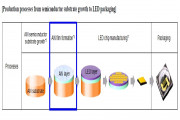 2020-09-15
2020-09-15
Stanley announced that it has confirmed high effectiveness of virus inactivation of SARS-CoV-2 by using its 265nm UVC LED, following a testing result in collaboration with Yamaguchi University. The company also reported its establishment of an integrated production system for UVC LED. Stanley and professors at Laboratory of Veterinary Microbiology, Joint Faculty of Veterinary Medicine, Yamaguchi University, jointly tested the UVC LED of Stanley on deactivating SARS-CoV-2 virus. They put 10 ml of virus solution (5 x 10⁵ PFU/mL) in dishes a...
Continue reading →
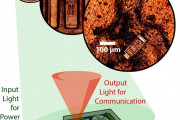 2020-09-15
2020-09-15
Cornell researchers have developed microsensors that are tiny enough to fit 30,000 on one side of a penny. These microscopic sensors are equipped with an integrated circuit, solar cells and Micro LEDs that enable them to harness light for power and communication. The research was published in PNAS in April, titled “Microscopic Sensors Using Optical Wireless Integrated Circuits.” The research team devised a platform for parallel production of their optical wireless integrated circuits (OWICs), microsensors the size of 100 µm. Researchers in the st...
Continue reading →
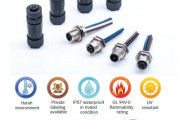 2020-09-14
2020-09-14
Amphenol LTW provides connectors for industrial automation and machine vision, horticultural lighting, LED lighting and display, fishing light and other markets. Under the influence of COVID-19, the industrial automation and machine vision markets are still making remarkable progress. LEDinside had the honor to interview Charles Wu, the Global BD of Amphenol LTW, to share with us Amphenol LTW solutions for machine vision applications in industrial automation.
(image: Amphenol LTW)
Charles Indicated that, due to the impact of COVID-19, the growth ...
Continue reading →
 2020-09-11
2020-09-11
LG officially launched its Micro LED signage solution, named “LG MAGNIT,” on September 10, which is the first Micro LED display product debuted by the company. LG is releasing the Micro LED display to the markets of the Americas, Europe, Asia and the Middle East.
(Image: LG)
LG has already included the Micro LED category including a few product details to its Business Solution webpage earlier this year as LEDinside covered in July. With the official launch, LG further updated several features of its Micro LED display.
L...
Continue reading →
 2020-09-10
2020-09-10
Lucid Motors unveiled production details of its electric vehicle, Lucid Air. This new electric-powered automobile features cutting-edge technologies including its LiDAR embedded ADAS and advanced headlamp lighting.
(Image: Lucid Motors)
The Lucid Air's ADAS is called Lucid DreamDrive, which is a platform combining comprehensive sensor suite with a Driver Monitoring System (DMS). According to Lucid Motors, it is the first system of its kind to offer 32 sensors, covering vision, radar and ultrasonics, plus high-resolution LIDAR in an E...
Continue reading →
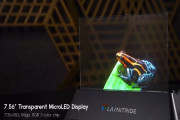 2020-09-10
2020-09-10
Even without a physical presence, Display Week 2020 still functioned as a major arena for competing technology providers to showcase their offerings. Noteworthy participants that unveiled their latest Micro LED products included LGD, AUO, Tianma, and BOE. In demonstrating their cutting-edge solutions, exhibitors used videos, images, and other media resources to overcome the limitations of the virtual venue.
The lack of physical exhibitions and conferences did not diminish the excitement over Micro LED displays during Display Week 2020. Many prominent developers ...
Continue reading →
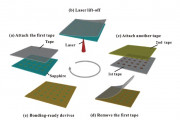 2020-09-09
2020-09-09
Researchers continue to focus on the current technology bottlenecks of Micro LED display manufacture. Recently, a team consisting of researchers from Guangdong Institute of Semiconductor Industrial Technology (GISIT), University of Tokyo, and Foshan Debao Display Technology reported their new transfer technique that integrates adhesive tape and laser lift-off (LLO) technology. The study was published in Advanced Materials Technologies, titled “Wafer-Scale Micro-LEDs Transferred onto an Adhesive Film for Planar and Flexible Displays.”
I...
Continue reading →
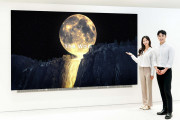 2020-09-09
2020-09-09
A Korean company announced that it has developed “12-inch sapphire wafer” with required quality which can help to support local demands of semiconductor materials, reported ETNEWS, a Korean media.
Japan imposed restriction on exportation of three semiconductor materials that are critical for display manufacture to South Korea due to disputes between the two countries. The Korea government and companies have thus been pushing the development of materials, components and equipment so that they will be less reliable on imposed products.
(Image: Samsung)
The...
Continue reading →
 2020-09-08
2020-09-08
According to the latest report of TrendForce, “2020 Global Automotive LED Product Trend and Regional Market Analysis,” demands for automotive LED increase stably driven by advanced applications such as intelligent headlamp, central tunnel taillights, HDR automotive displays, ambient lights and more.
Headlamps play the major role in the development of automotive LED lighting. The driving momentum include halogen replacement, small aperture, adaptive driving beam (ADB) and projection. TrendForce analyzed that halogen replacement and ADB will occup...
Continue reading →
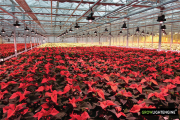 2020-09-07
2020-09-07
Citizen Electronics announced it has signed a licensing agreement with Valoya, a Finnish LED grow light technology developer. With the partnership, Citizen Electronics will apply Valoya's spectrum technology know-how in order to strengthen its COB (chip on board) LED products intended for the horticulture industry.
(Image: Valoya)
Valoya has launched its patent licensing program in June this year. The patent portfolio accounts Valoya's inventions in the field of light spectra for plant cultivation and lighting applications.
“Access to the Valoy...
Continue reading →
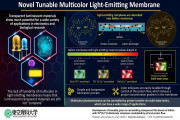 2020-09-04
2020-09-04
Researchers from Tokyo University of Science reported an achievement of developing transparent films that can tune the emitting color. This innovation of color tunable transparent films may provide a wide range of application potential for LED displays and illumination.
Published in The Royal Society of Chemistry's Materials Advances, the research team described the mechanism it has developed to tune the photoemission of a solid polymeric film. The method is to control the flow of protons in it by applying a voltage. The study provided insights into the creation of mo...
Continue reading →
 2020-09-03
2020-09-03
Vuzix announced that it is developing next generation product line of smart glasses powered by Micro LED technology that are expected to become available in 2021.
(Image: Vuzix)
The smart glasses maker said that the Micro LED-based product line will include middle-end consumer-facing product and a higher end enterprise version with built-in cellular connectivity.
(Image: Vuzix)
Micro LED will be used as projectors for the smart glasses to deliver high density pixel arrays with both monochrome and full color solution. The glasses will also feature a larger field...
Continue reading →
 2020-09-02
2020-09-02
University of Texas at Dallas researchers and their international colleagues have developed a method to create Micro LEDs that can be folded, twisted, cut and stuck to different surfaces. The research, published online in the journal Science Advances, helps pave the way for the next generation of flexible, wearable technology.
The research team created a detachable Micro LED with flexibility, aiming to fulfill the growing demand for bendable, wearable electronics. Researchers develop the flexible LED through a technique called remote epitaxy. To make it detachable, res...
Continue reading →
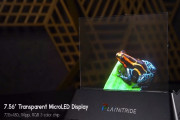 2020-08-31
2020-08-31
Micro LED technology developers from Taiwan unveiled their latest progress in quantum dots (QD) color conversion and wafer production. Lextar introduced its progresses in reliable QD development to realize full color Micro LED displays while PlayNitride shared its achievement of 6-inch Micro LED epitaxial wafers with advanced uniformity.
(Image: screenshot from PlayNitride video)
Lextar, a vertical integrated LED company based in Taiwan, shared that the company has been working on deploying QD color conversion technology on Micro LED display. Since M...
Continue reading →
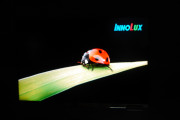 2020-08-25
2020-08-25
Sharp’s mass production plan for Micro LED displays marked a progress of the Foxconn Group in next-gen display technology development. Incorporates LED chip production, packaging technology, panel manufacture and TV brands, the Foxconn Group is known for its ambition to set up an internal Micro LED supply chain.
The Micro LED displays developed by Sharp, a 0.38-inch full color panel featuring 1053 PPI and a 0.13-inch blue display with 3000 PPI, were designed by the semiconductor group under Foxconn and manufactured by Sharp Fukuyama Semiconductor.
...
Continue reading →
 2020-08-24
2020-08-24
A new research by Stanford scientist demonstrate a new approach to slow down light so that photons have more chances to interact with other materials, opening a door for new applications such as LiDAR, LiFi and AR/VR. The research paper was published in Nature Nanotechnology on August 17, 2020.
To slow down light, the Stanford researchers structured ultrathin silicon chips into nanoscale bars to resonantly trap light and then release or redirect it later. The approach is like creating an echo chamber to hold onto sound and direct it. These "high-quality-factor&quo...
Continue reading →
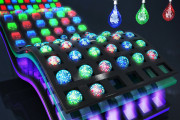 2020-08-24
2020-08-24
Researchers from Taiwan’s National Tshing Hua University (NTHU) developed a method of adding salt water to quantum dots to make the materials more stable and easier for inkjet printing for optimized Micro LED display manufacture. Their results were published in ACS Applied Materials & Interfaces, titled “Inkjet-Printed Salt-Encapsulated Quantum Dot Film for UV-Based RGB Color-Converted Micro-Light Emitting Diode Displays.” (Image: NTHU) Full color Micro LED display fabrication is challenging due to poor performanc...
Continue reading →
 2020-08-20
2020-08-20
Micro LED display technology based on self-emitting pixels delivers advanced contract ratio, high brightness and wide color gamut. Many believe that the technology is bringing revolutions to the display industry and can be widely adopted in different forms of applications. However, after years of development with more and more players joining the ecosystem, the fundamental issues for mass production are yet to be tackled. The most well-known difficulty of Micro LED display manufacture is mass transferring as most of the LED companies do not have equipment capable of process ...
Continue reading →
 2020-08-20
2020-08-20
Perovskite LED promises higher color quality and ease of manufacture, so it is oven considered a solution to breakthrough LED applications. However, it has been known to fail when subjected to the kind of electrical current typically needed for practical uses. A research team from Princeton University has demonstrated improvement of perovskite LED in stability and performance by better managing the thermal dissipation. (Photo by Sameer A. Khan/Fotobuddy; image source: Princeton) The research, published in Advanced Materials, is titled “Thermal Management ...
Continue reading →
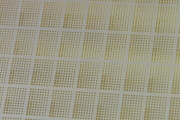 2020-08-19
2020-08-19
Sharp, one of the panel providers of Apple, is reportedly developing small size Micro LED displays and will mass produce the products by 2023 for eye-wear smart devices, reported Nikkan Kogyo Shimbun.
According to the report, Sharp Fukuyama Semiconductor, a subsidiary of Sharp, has developed Micro LED prototypes including a 0.38-inch full color panel featuring 1053 PPI and a 0.13-inch blue display with 3000 PPI. The company deploys its proprietary color conversion technology to achieve full color display and aims to mass produce the products in 2023 to 2024 for A...
Continue reading →
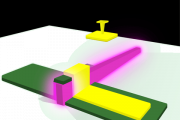 2020-08-19
2020-08-19
The National Institute of Standards and Technology (NIST) published a new article in Science Advances demonstrating a new design for LED that may overcome a long-standing limitation in the light sources' efficiency. The research team developed microscopic LEDs which achieve a dramatic increase in brightness as well as the ability to create laser light.
Consisting of scientists from the University of Maryland, Rensselaer Polytechnic Institute and the IBM Thomas J. Watson Research Center, the team achieved 100 to 1,000 times higher brightness with LEDs...
Continue reading →
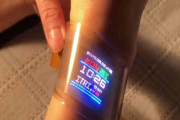 2020-08-14
2020-08-14
Despite the interruption of the COVID-19 pandemic, the development of novel display technologies have to go on. At the virtual Display Week held last week, there were still several new Micro LED display exhibits showcased by worldwide experts. LEDinside selects a few innovations that cannot be missed.
AUO
AUO exhibited an integrated full color TFT driven Micro LED automotive displays with two 9.4-inch flexible Micro LED panels. Its S-curve shape enables the display to be mounted into automotive interior design. It also demonstrated a 12.1-inch Micro...
Continue reading →
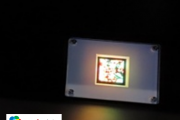 2020-08-12
2020-08-12
Kyocera and Osram reported worked on a new Micro LED display driving technology. According to a report of MicroLED-info, the two companies have designed a hybrid current and PWM driving technology for Micro LED displays.
The new driving scheme can be used to avoid using lower pixel currents through Micro LED chips, as described by Kyocera and Osram. As a result, the approach reduces luminance deviation and color shift even at lower grayscale levels.
The new driving technology was demonstrated with Kyocera’s 3.9-inch full color Micro LED display bas...
Continue reading →
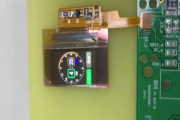 2020-08-10
2020-08-10
PMOLED panel maker RiTdisplay presented a Micro LED thin film display at virtual Display Week that took place last week from August 3 to 8. The company also indicated in its investor conference last week that it has begun sending sample of Mini LED products this year and the shipment is scheduled in 2021.
(Image: screenshot from RiTdisplay's video)
RiTdisplay has been collaborating with Micro LED company PlayNitride since 2019 to develop Micro LED displays. The two parties exhibited a few small size Micro LED display modules for wearable appl...
Continue reading →
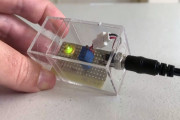 2020-08-07
2020-08-07
NS Nanotech, a LED materials company startup announced its first technical milestone with the demonstration of a nano-LED that promises to close the “green gap” in LEDs.
The new LED technology is based on patented technology enabling fabrication of components that will be smaller and draw far less power than current LED solutions, while emitting brighter, more saturated, more stable, and more directional green light. The demonstration unit is now showing at the virtual Display Week until today.
(Image: screenshot from NS Nanotech video)
Seth C...
Continue reading →
 2020-08-07
2020-08-07
AMS and Ibeo Automotive Systems confirm that ams VCSEL technology is a core component of Ibeo’s new solid-state LiDAR solution, ibeoNEXT. Ibeo’s LiDAR system will be used in Level-3 automated driving on production vehicles at Great Wall Motor Company starting in 2022.
The VCSEL manufacturing technology of ams allows for flexibility in layout design regarding number of pixels, their size and pitch, and specific addressability patterns. The VCSELs can differentiate in scan and flash applications as they are less sensitive to individual e...
Continue reading →
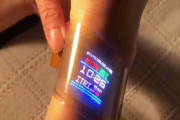 2020-08-07
2020-08-07
Industrial Technology Research Institute (ITRI) from Taiwan continues to strengthen its Micro LED technology development. The organization joined virtual Display Week 2020 as well and presented its latest Micro LED breakthrough.
(Image: screenshot from ITRI video )
ITRI showcased a flexible full color Micro LED display module at its online booth. The flexible Micro LED display sizes 60mm*30mm with a pixel pitch of 250 µm and a resolution of 240*120 (100 PPI). The display module is demonstrated as a wearable devices combining the Micro L...
Continue reading →
 2020-08-06
2020-08-06
Radiant Vision Systems, a subsidiary of the Konica Minolta group who experts in photometric imaging solutions for light and display measurement, announces that it will present a technical paper during the 2020 Display Week Symposium taking place online from August 3-7. Doug Kreysar, CEO of Radiant Vision Systems, will present the company’s paper titled “Fractional Pixel Method for Improved Pixel-Level Measurement and Correction (Demura) of High-Resolution Displays.”
(Image: Radiant Vision Systems)
The presentation will highlight the c...
Continue reading →
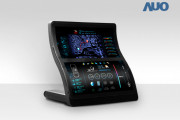 2020-08-06
2020-08-06
As virtual Display Week goes on, Taiwan-based panel maker AUO announced its demonstration of advanced display technologies covering Micro LED automotive displays, Mini LED medical displays, a full range of gaming displays as well as display applications in smart retail and transportation.
Pioneering the next generation display technology, AUO is showcasing a complete series of full color TFT driven Micro LED automotive displays. The 9.4-inch flexible Micro LED display developed jointly by AUO and PlayNitride is now integrated into a automotive display t...
Continue reading →
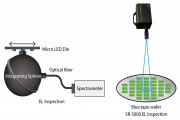 2020-08-06
2020-08-06
The development of Micro LEDs, quantum dot (QD) displays as a next generation displays following LCDs and OLEDs are becoming popular. By reducing the chip size to less than 100 µm and 10 nm levels compared to existing LEDs, with high-definition, high color saturation, fast response and high reliability, it‘s performance surpasses conventional LCDs and OLED displays. These devices are also ideal for new applications such as AR/VR/MR/SR, automotive head-up displays (HUDs), micro projectors, and smartwatches, which are expected to expand the mark...
Continue reading →
 2020-09-15
2020-09-15
 2020-09-15
2020-09-15
 2020-09-11
2020-09-11
 2020-09-10
2020-09-10
 2020-09-10
2020-09-10
 2020-09-09
2020-09-09
 2020-09-09
2020-09-09
 2020-09-08
2020-09-08
 2020-09-07
2020-09-07
 2020-09-04
2020-09-04
 2020-09-03
2020-09-03
 2020-09-02
2020-09-02
 2020-08-31
2020-08-31
 2020-08-25
2020-08-25
 2020-08-24
2020-08-24
 2020-08-24
2020-08-24
 2020-08-20
2020-08-20
 2020-08-20
2020-08-20
 2020-08-19
2020-08-19
 2020-08-19
2020-08-19
 2020-08-14
2020-08-14
 2020-08-12
2020-08-12
 2020-08-10
2020-08-10
 2020-08-07
2020-08-07
 2020-08-07
2020-08-07
 2020-08-07
2020-08-07
 2020-08-06
2020-08-06
 2020-08-06
2020-08-06
 2020-08-06
2020-08-06